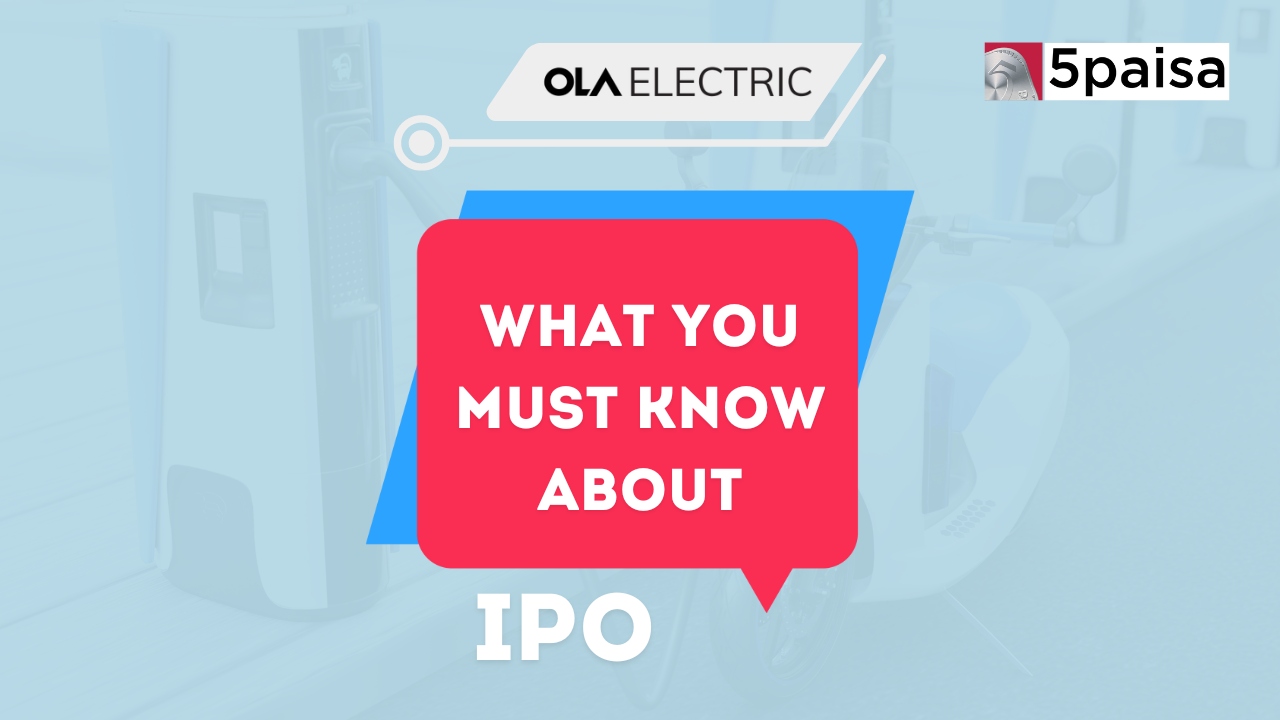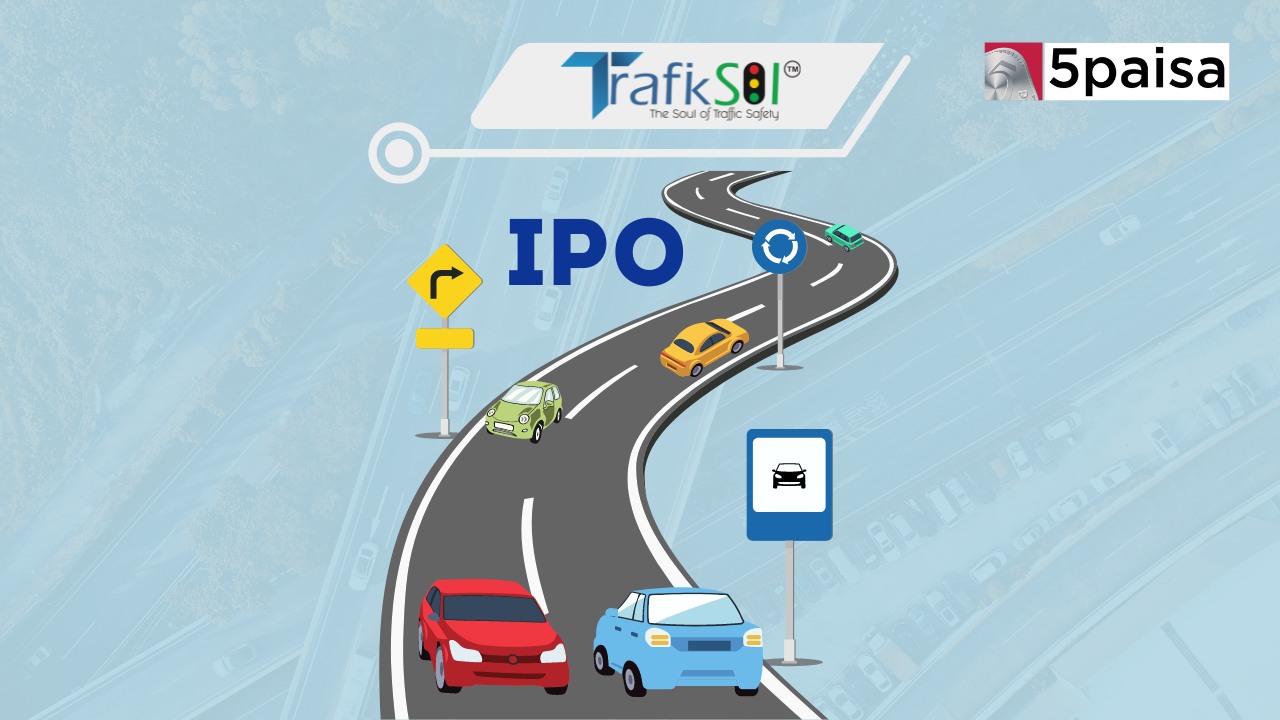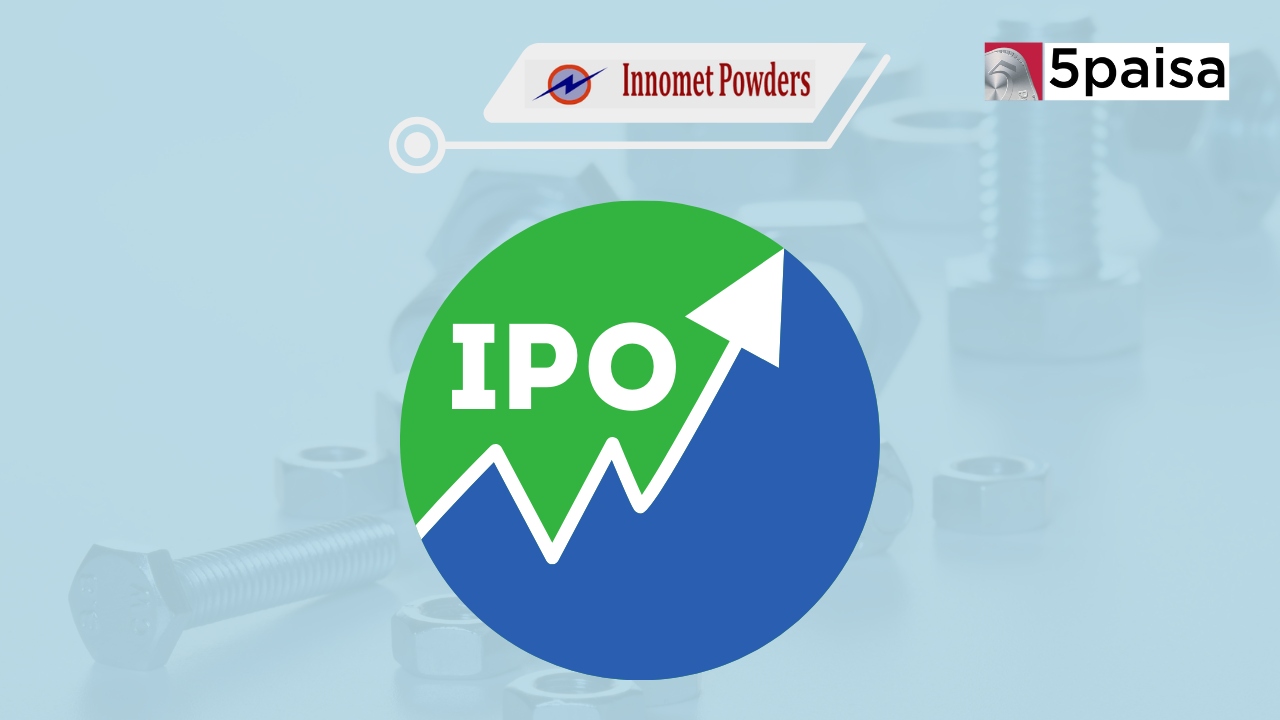What You Must Know About Trafiksol ITS Technologies IPO: Price Band ₹66 to ₹70 Per Share
What You Must Know About Ola Electric IPO: Price Band ₹72 to ₹76 Per Share

Last Updated: 7th August 2024 - 10:10 am
About Ola Electric Mobility
Founded in 2017, Ola Electric Mobility Limited specializes in manufacturing electric vehicles & core components such as battery packs, motors, & vehicle frames at Ola Future Factory. Since August 2021, the company has introduced seven new products & announced four more, starting with Ola S1 Pro, which was delivered in December 2021, followed by Ola S1, Ola S1 Air, Ola S1 X, & Ola S1 X+.
On August 15, 2023, the company unveiled new EV models & a lineup of motorcycles including Diamondhead, Adventure, Roadster, & Cruiser. By October 31, 2023, Ola Electric had established an omnichannel distribution network across India, featuring 870 experience centers & 431 service centers (with 429 integrated into experience centers), along with Ola Electric website. In FY 2023, approximately 75% of the company's 2W exports from India were directed to Africa, LATAM, & Southeast Asia, while domestic E2W supply remained limited. Ola Electric's business model is built on three scalable platforms: R&D & technology platform for in-house design & development of EV technologies & components, an adaptable production & supply chain platform, & a D2C omnichannel sales platform. As of March 31, 2024, the company employed 959 individuals (including 907 permanent employees & 52 freelancers) dedicated to research & development, product development, vehicle & software development, vehicle design, & cell development.
Highlights of Ola Electric Mobility IPO
Here are some highlights of Ola Electric Mobility IPO on the segment of National Stock Exchange (NSE).
• Issue Details: OLA Electric IPO is a book-built issue totaling Rs 6,145.56 crores, comprising a fresh issue of 72.37 crore shares aggregating to Rs 5,500.00 crores & an offer for sale of 8.49 crore shares aggregating to Rs 645.56 crores.
• Subscription & Listing Dates: IPO opens for subscription on August 2, 2024, & closes on August 6, 2024. allotment is expected to be finalized on August 7, 2024, with a tentative listing date of August 9, 2024, on BSE & NSE.
• Price Band & Investment Details: The price band is set at ₹72 to ₹76 per share. The minimum lot size for an application is 195 shares, requiring a minimum investment of ₹14,820 for retail investors. For sNII, the minimum investment is 14 lots (2,730 shares) amounting to ₹207,480, and for bNII, it is 68 lots (13,260 shares) amounting to ₹1,007,760.
• Lead Managers: The book-running lead managers for the IPO are Kotak Mahindra Capital Company Limited, Bofa Securities India Limited, Axis Capital Limited, SBI Capital Markets Limited, Citigroup Global Markets India Private Limited, Goldman Sachs (India) Securities Private Limited, ICICI Securities Limited, and Bob Capital Markets Limited.
• Registrar: Link Intime India Private Ltd is the registrar for OLA Electric IPO.
The IPO of Ola Electric Mobility will be listed on the IPO segment of NSE SME.
Ola Electric Mobility IPO – Key Dates
Here are key dates about the IPO.
| Event | Date |
| IPO Open Date | August 2, 2024 |
| IPO Close Date | August 6, 2024 |
| Allotment Date | August 7, 2024 |
| Initiation of Refunds | August 8, 2024 |
| Credit of Shares to Demat | August 8, 2024 |
| Listing Date | August 9, 2024 |
Data Source: Company RHP
In ASBA applications, there is no refund concept. Total application amount is blocked under ASBA (applications supported by blocked amounts) system. Once allotment is finalized, only the amount is debited to the extent of allotment made & lien on balance amount is automatically released in bank account. Credit of shares to demat account on Aug 8th 2024, will be visible to investors under ISIN Code. This credit to demat account is only applicable to extent of allocation of shares & if no allocations are made in IPO, then no credit would be visible in demat account.
OLA Electric Capital History
The Equity share capital history of the company began with an initial allotment of 10,000 shares at ₹10 each on February 3, 2017. This was followed by a rights issue of 7 Class B shares to Pawan Munjal Family Trust on March 18, 2020, & an ESOP exercise of 21 shares to Chirag R. Shah on July 29, 2021. On December 23, 2021, a significant bonus issue of 1,955,449,972 shares was distributed to various stakeholders. Later, on December 8, 2023, 1,364,993 Class B shares were reclassified to equity shares. On June 17, 2024, 436,416,377 shares were issued upon conversion to entities like SVF II Ostrich (DE) LLC, & on July 19, 2024, another 1,295,205,909 shares were issued upon further conversion to entities including ANI Technologies Private Limited & Hyundai Motor Company. cumulative paid-up equity share capital reached ₹36,870,722,580 by July 19, 2024.
IPO Allocation & Minimum Investment Lot Size
The Ola Electric Mobility IPO allocates its shares as follows: at least 50% of net offer is reserved for Qualified Institutional Buyers (QIBs), no more than 35% is allocated for retail investors, & at least 15% is reserved for Non-Institutional Investors (NIIs).
| Investor Category | Shares Offered |
| QIB Shares Offered | Not less than 75% of Net Issue |
| Retail Shares Offered | Not more than 10% of Net Issue |
| NII (HNI) Shares Offered | Not more than 15% of Net Issue |
Data Source: Company RHP
The OLA Electric IPO allows investors to bid for a minimum of 195 shares, with bids in multiples of this amount. Retail investors can invest a minimum of ₹14,820 for 195 shares & up to a maximum of ₹192,660 for 2,535 shares. Small High Net Worth Individuals (S-HNI) can invest from ₹207,480 for 2,730 shares to ₹992,940 for 13,065 shares. Big High Net Worth Individuals (B-HNI) have a minimum investment of ₹1,007,760 for 13,260 shares.
| Application | Lots | Shares | Amount |
| Retail (Min) | 1 | 195 | ₹14,820 |
| Retail (Max) | 13 | 2,535 | ₹192,660 |
| S-HNI (Min) | 14 | 2,730 | ₹207,480 |
| S-HNI (Max) | 67 | 13,065 | ₹992,940 |
| B-HNI (Min) | 68 | 13,260 | ₹1,007,760 |
There are no upper limits for investments by HNIs / NIIs in the IPO of Ola Electric Mobility Ltd.
About OLA Electric IPO
Ola Electric Mobility Limited was established in 2017 with the primary goal of producing electric vehicles & certain essential parts for them, like motors, battery packs, & vehicle chassis, at the Ola Future factory.
Strengths
1. Leadership in Indian E2W Market: OLA Electric holds a leading position in the rapidly expanding Indian electric two-wheeler (E2W) market, with E2W penetration expected to increase significantly by Fiscal 2028. The company was the largest E2W seller in India in Fiscal 2024, capturing approximately 35% of the market. Its exclusive focus on electric vehicles (EVs) allows it to fully leverage this growth without the need to allocate resources to internal combustion engine (ICE) technologies.
2. Founder-Led with Experienced Leadership: Founded & led by Bhavish Aggarwal, who also founded Ola Cabs, company benefits from his entrepreneurial experience & recognition in industry. Board of Directors & senior management team bring diverse expertise across various industries, enhancing company's strategic direction & operational effectiveness.
3. In-House R&D & Technology Capabilities: OLA Electric's robust R&D efforts are conducted in India, UK, & US, focusing on developing new EV products & core components like battery packs, motors, & vehicle frames. Battery Innovation Center (BIC) is dedicated to advancing cell & battery technology for the upcoming Ola Gigafactory. Their R&D focuses on five key areas: software, electronics, motor & drivetrain, cells & battery packs, & manufacturing technology.
Weaknesses
1. Geopolitical Uncertainty: Actual or threatened geopolitical tensions such as wars, terrorist activities, political unrest, & civil strife can disrupt our supply chain, leading to inventory shortages & increased costs. Such disruptions can adversely affect our business, financial condition, & cash flows. Geopolitical tensions can also lead to cross-border restrictions, sanctions, & trade barriers, impacting our production schedules & margins.
2. Economic Conditions: Challenging economic conditions can affect consumer demand for our electric vehicles (EVs). Variance in consumer spending, influenced by factors like tax rates, interest rates, & availability of consumer credit, can impact sales volumes of our premium EV scooters, such as Ola S1 Pro. Economic downturns can reduce discretionary consumer spending, harming our business prospects & operating results.
3. Natural Disasters & Global Pandemics: Natural disasters, fires, pandemics, & other catastrophic events can materially & adversely affect our business operations. Events like COVID-19 pandemic can disrupt supply chains, increase costs, & cause regional or global economic distress, impacting our business, financial condition, & results of operations. Future pandemics or similar outbreaks could pose similar risks & uncertainties.
Financial Highlights: Ola Electric Mobility Ltd
The table below captures the key financials of Ola Electric Mobility Ltd for the last 3 completed financial years.
| Period Ended | FY24 | FY23 | FY22 | FY21 |
| Assets (₹ in Crore) | 7,735.41 | 5,573.17 | 5,395.86 | 2,112.64 |
| Revenue (₹ in Crore) | 5,243.27 | 2,782.70 | 456.26 | 106.08 |
| Profit After Tax (₹ in Crore) | -1,584.40 | -1,472.08 | -784.15 | -199.23 |
| Net Worth (₹ in Crore) | 2,019.34 | 2,356.44 | 3,661.45 | 1,970.62 |
| Reserves & Surplus (₹ in Crore) | -2,882.54 | -1,380.03 | -68.83 | 1,999.30 |
| Total Borrowing (₹ in Crore) | 2,389.21 | 1,645.75 | 750.41 | 38.87 |
Data Source: Company RHP filed with SEBI
Financial Analysis of Ola Electric Mobility Limited
1. Assets: Ola Electric's assets have seen significant growth over years, increasing by 38.82% from FY 2023 to FY 2024. This growth indicates substantial investment & expansion in the company's infrastructure & operational capabilities.
2. Revenue: Sales has grown impressively by 88.42% from FY 2023 to FY 2024. This surge reflects a strong market demand & successful sales strategies. consistent year-on-year revenue growth highlights the company's increasing market presence & customer base.
3. Profit After Tax (PAT): Despite revenue growth, PAT has deteriorated, showing a 7.63% increase in losses from FY 2023 to FY 2024. widening losses indicate rising costs & expenses, which need to be managed more efficiently to achieve profitability.
4. Net Worth: It has decreased by 14.29% from FY 2023 to FY 2024, reflecting impact of accumulated losses on shareholders' equity. declining trend since FY 2022 points to challenges in maintaining positive equity.
5. Reserves & Surplus: It has turned increasingly negative, indicating that losses are depleting retained earnings & reserves. sharp decline from positive reserves in FY 2021 to substantial deficits in FY 2023 & FY 2024 is a critical concern for financial stability.
6. Total Borrowing: It has escalated significantly, with a 45.18% increase from FY 2023 to FY 2024. This rising debt level suggests increased reliance on external financing, which could pose risks related to interest obligations & financial leverage.
Read our previous article on Ola Electric's ₹7,500-crore IPO Secures SEBI Approval
Trending on 5paisa
02
 Tanushree Jaiswal
Tanushree Jaiswal
05
 Tanushree Jaiswal
Tanushree Jaiswal
Discover more of what matters to you.
IPOs Related Articles
Disclaimer: Investment in securities market are subject to market risks, read all the related documents carefully before investing. For detailed disclaimer please Click here.





